Table of Contents |
To fuel cellular activity and maintain life, humans rely on intaking oxygen and expelling carbon dioxide via inhalation and exhalation (breathing). During inhalation, air enters the body through the nasal cavity located just inside the nose. As air passes through the nasal cavity, the air is warmed to body temperature and humidified. The respiratory tract is coated with mucus to seal the tissues from direct contact with air. Mucus has a high content of water. As air crosses these surfaces of the mucous membranes, it picks up water. These processes help equilibrate the air to the body conditions, reducing any damage that cold, dry air can cause. Particulate matter that is floating in the air is removed in the nasal passages via mucus and cilia. The processes of warming, humidifying, and removing particles are important protective mechanisms that prevent damage to the trachea and lungs. Thus, inhalation serves several purposes in addition to bringing oxygen into the respiratory system.
Breathing, the movement of air into and out of the lungs, is an involuntary event. How often a breath is taken and how much air is inhaled or exhaled are tightly regulated by the respiratory center in the brain. With every inhalation, air fills the lungs, and with every exhalation, air rushes back out.
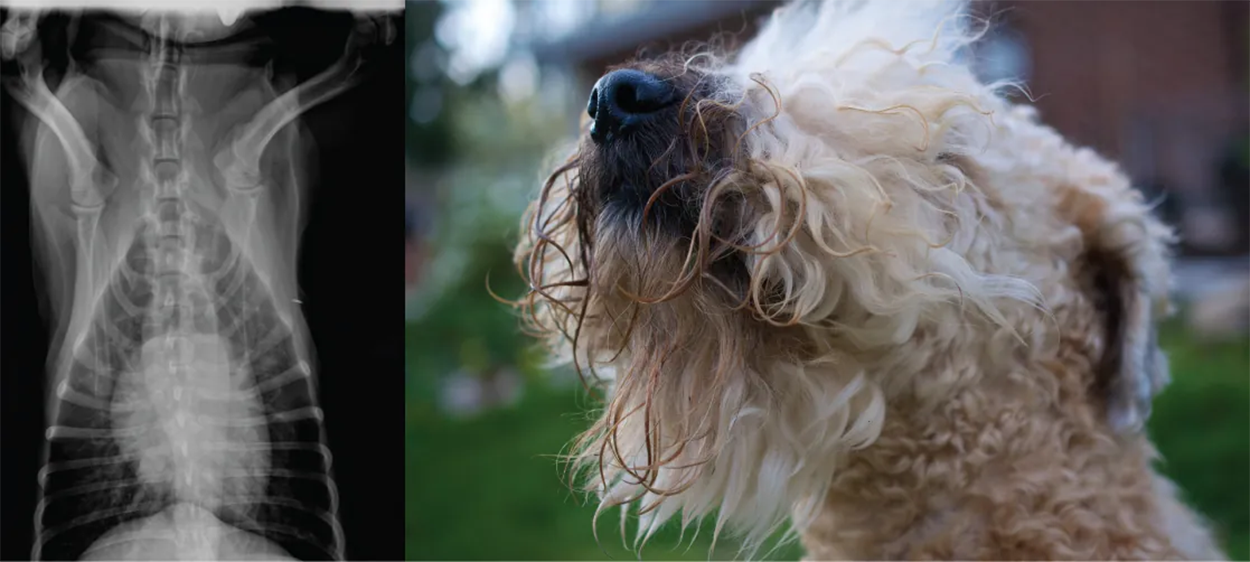
However, the air is doing more than just inflating and deflating the lungs in the chest cavity. The primary function of the respiratory system is to deliver oxygen to the cells of the body’s tissues and remove carbon dioxide, a cell waste product. The air contains oxygen that crosses the lung tissue, enters the bloodstream, and travels to organs and tissues. Oxygen (O₂) enters the cells, where it is used for metabolic reactions that produce ATP, a compound that provides energy that drives and supports numerous processes in cells. At the same time, these reactions release carbon dioxide (CO₂) as a by-product. CO₂ is toxic and must be eliminated. Therefore, CO₂ exits the cells, enters the bloodstream, travels back to the lungs, and expires out of the body during exhalation.
Pulmonary ventilation is the act of breathing, and the respiratory tract is the passage formed by the major respiratory structures through which air passes during breathing. The major organs of the respiratory system primarily function to provide oxygen to body tissues for cellular respiration, remove the waste product carbon dioxide, and help to maintain acid–base balance. Portions of the respiratory system are also used for non-vital functions, such as sensing odors, speech production, and for straining, such as during childbirth or coughing.
The respiratory system includes complex structures that facilitate breathing. There are two main ways in which the respiratory system is divided: anatomically and functionally. In the rest of this lesson, you will learn about the anatomical and functional divisions of the respiratory system.
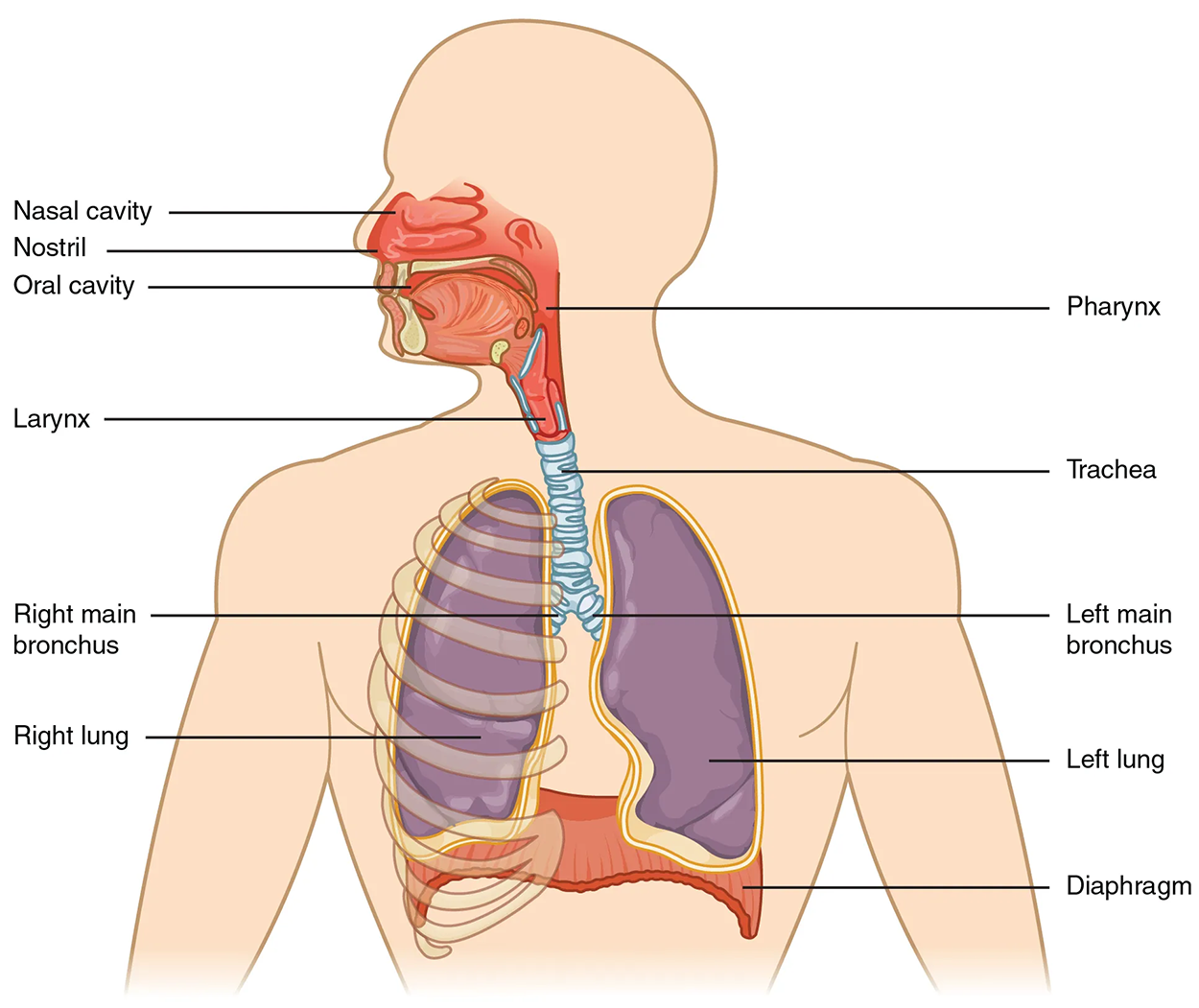
Anatomically, the respiratory tract is divided into the upper respiratory tract (the nose, nasal cavity, pharynx, and larynx) and the lower respiratory tract (the trachea, bronchial tree, lungs, alveolar ducts, and alveoli of the lungs).
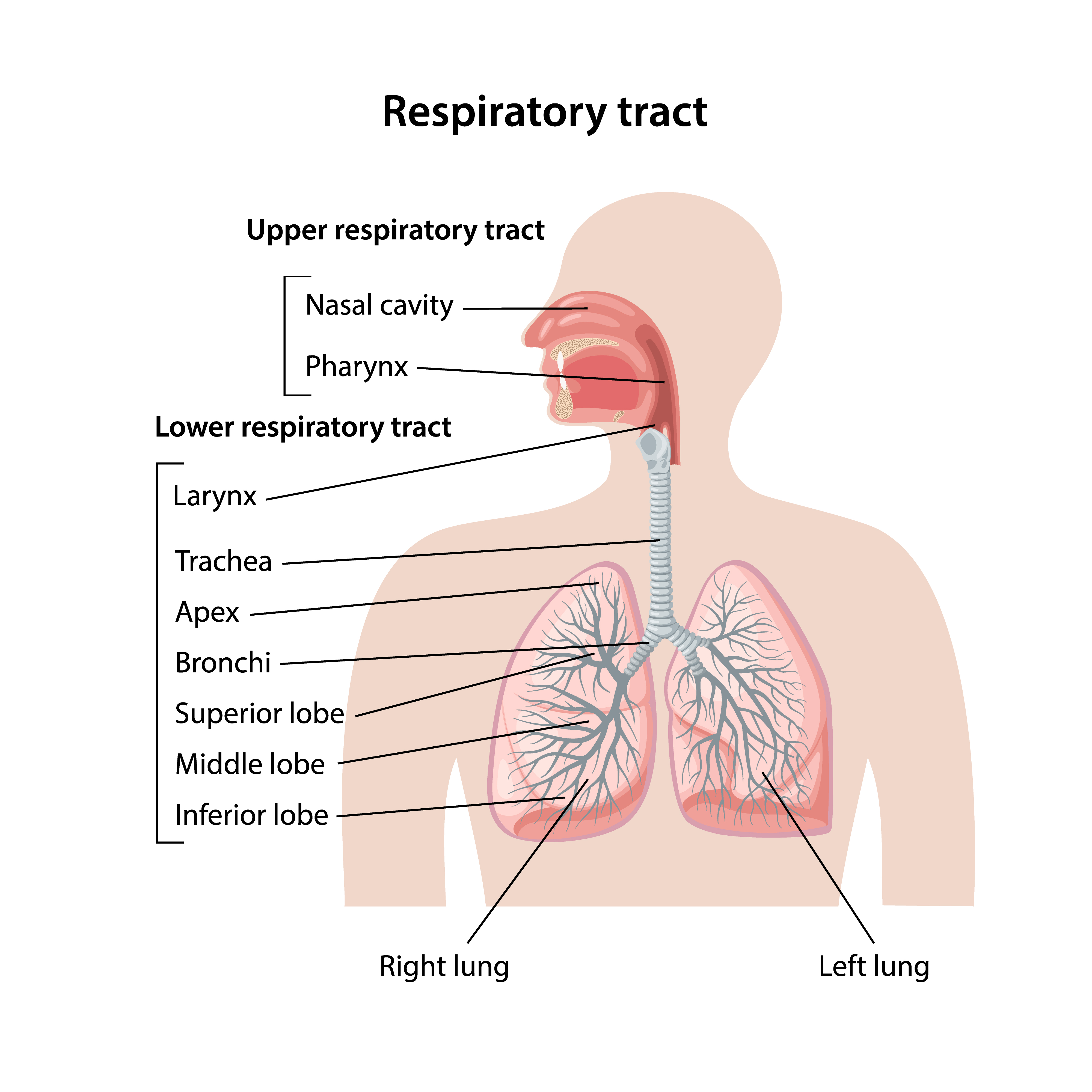
The primary roles of the upper respiratory tract include passing of air breathed in and out of the lungs as well as heating, humidifying, and filtering the air. Moreover, it is involved in actions such as swallowing, speech, and sneezing.
The lower respiratory tract structures are responsible for pulling air from the upper respiratory system, absorbing oxygen, and releasing carbon dioxide. They are also involved in vocalization and are essential for human speech.
Functionally, the respiratory system can be divided into a conducting zone and a respiratory zone.
The conducting zone of the respiratory system includes the organs and structures not directly involved in gas exchange. This zone includes the nasal cavity, pharynx, larynx, trachea, bronchi, and most bronchioles, and its primary roles include providing a route for incoming and outgoing air, removing debris and pathogens from the incoming air, and warming and humidifies the incoming air. Several structures within the conducting zone perform other functions as well.
EXAMPLE
The epithelium of the nasal passages is essential to sensing odors, and the bronchial epithelium that lines the lungs can metabolize some airborne carcinogens (cancer-causing substances).Alternatively, the respiratory zone is where gas exchange occurs. This zone includes the respiratory bronchioles, alveolar ducts, and alveoli, which are directly involved in gas exchange.
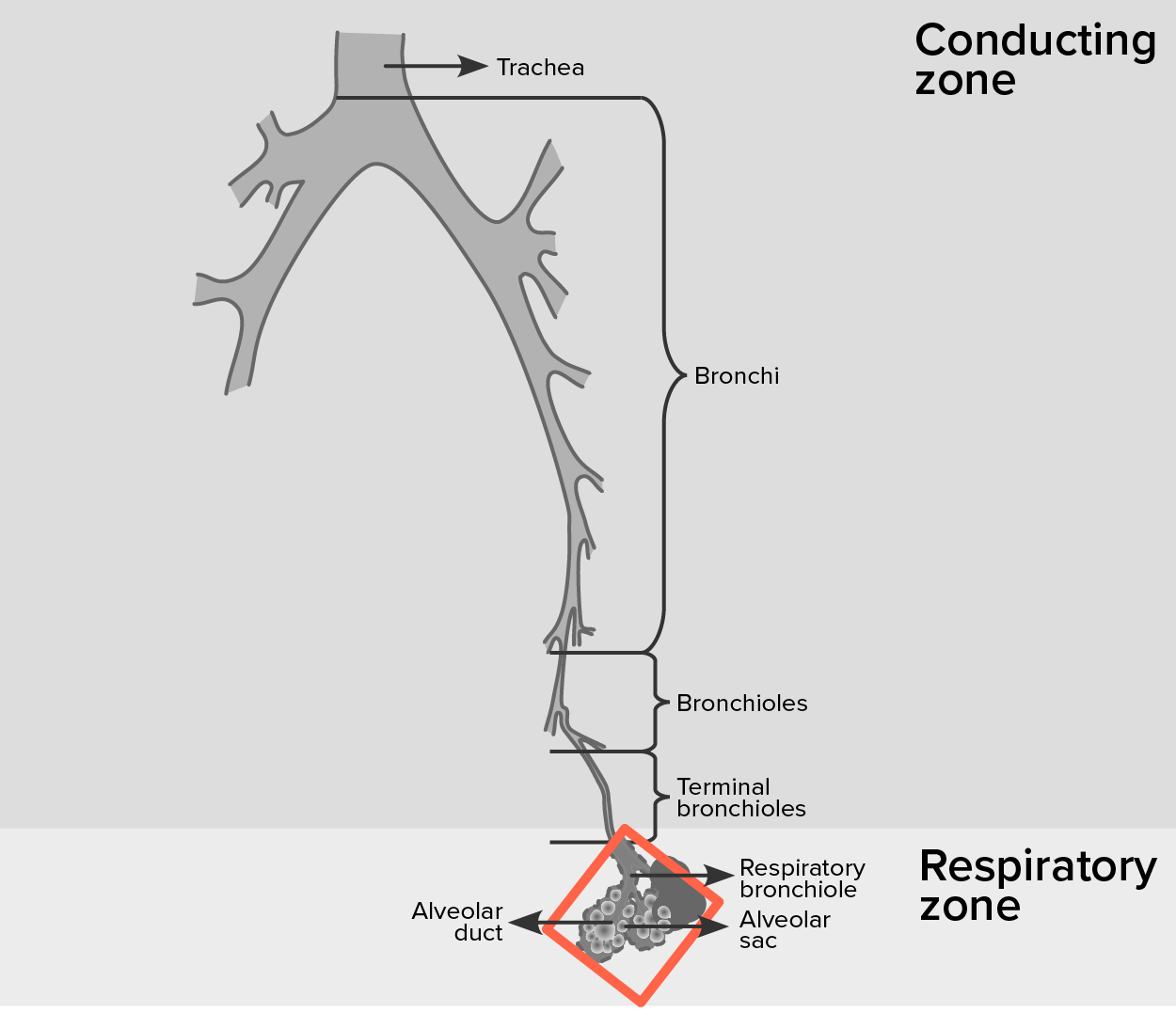
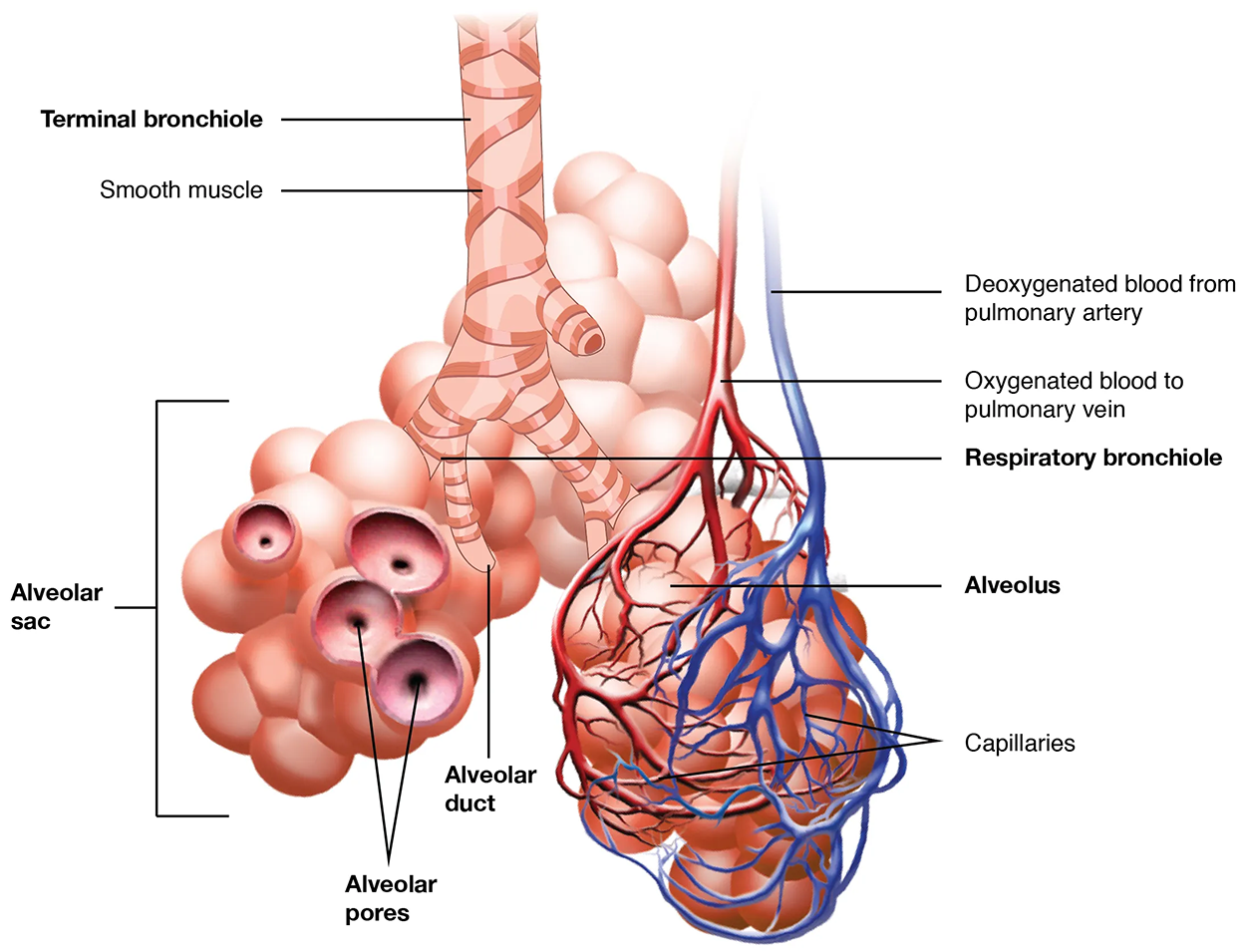
 Interactive 3-D Model
Interactive 3-D ModelSOURCE: THIS TUTORIAL HAS BEEN ADAPTED FROM (1) OPENSTAX “BIOLOGY 2E”. ACCESS FOR FREE AT OPENSTAX.ORG/BOOKS/BIOLOGY-2E/PAGES/1-INTRODUCTION (2) OPENSTAX “ANATOMY AND PHYSIOLOGY 2E”. ACCESS FOR FREE AT OPENSTAX.ORG/BOOKS/ANATOMY-AND-PHYSIOLOGY-2E/PAGES/1-INTRODUCTION. LICENSING (1 & 2): CREATIVE COMMONS ATTRIBUTION 4.0 INTERNATIONAL.